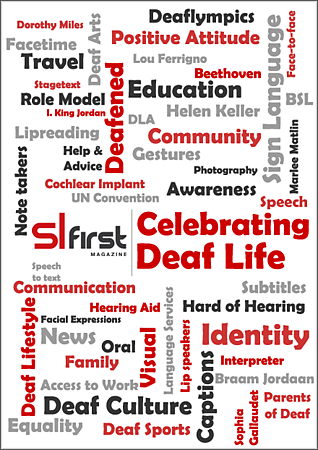Education9th February 2016
Deaf Education in Kenya….Not there yet!
Leading to poor socioeconomic outcomes for Deaf people, education in Kenya relies almost entirely on the oral method of teaching
 For a long time, deafness in Kenya and in many parts of Africa, was considered a curse or something caused by witchcraft. It still is in some areas. As a result, people who are deaf have been subjected to exclusion and did not receive equal and fair treatment compared to the rest. For instance, many parents with deaf children preferred to educate their hearing children while leaving their deaf children at home. However, this 'information age' has seen significant reshaping of perspectives and discourses surrounding deafness.
For a long time, deafness in Kenya and in many parts of Africa, was considered a curse or something caused by witchcraft. It still is in some areas. As a result, people who are deaf have been subjected to exclusion and did not receive equal and fair treatment compared to the rest. For instance, many parents with deaf children preferred to educate their hearing children while leaving their deaf children at home. However, this 'information age' has seen significant reshaping of perspectives and discourses surrounding deafness.
In Kenya there has been a remarkable positive shift in how deafness is perceived. More and more, the government, parents of deaf children and society in general have come to terms with the fact that the deaf are individuals with full rights to education, self-determination and everything that pertains to life.
In the education sector, there has been significant improvements in the number of schools built for the deaf, the level of enrolment and policies have been enacted to support deaf education. Nevertheless, deaf education in Kenya is plagued by a wide range of challenges. It is a sad fact that nearly 90% of deaf individuals who finish their high school education, cannot effectively read and write, attain higher education or find meaningful employment. Consequently, a majority of the deaf living in Kenya experience poor socioeconomic outcomes. Based on these outcomes, the quality of deaf education in Kenya is indeed questionable. Very little research has been directed towards examining what is plaguing deaf education and what can be done to salvage it.
Studies conducted by Peace Corps Kenya identify that perhaps one of the key things ailing deaf education in Kenya is the lack of proper recognition and adaptation of Kenya Sign Language (KSL) as a medium of instruction. We have many teachers in deaf schools who do not know how to effectively communicate with deaf learners in KSL. Some teachers rely entirely on the oral method to teach deaf learners. Then again there is a lot of controversy surrounding the use of Sign Exact English (SEE) (in Kenya also referred to as Kenya Sign Language for Schools (KSS) versus the use of KSL. Dr. Jefwa Merwa, a linguistic expert in Kenya, strongly believes that there can be major improvements in deaf education in Kenya, if KSL is effectively adopted as the medium of instruction to teach English and other subjects. Besides this, deaf education is Kenya is plagued by poor teacher training, limited resources and an unsuitable curriculum that does not take into account the needs of deaf learners.
The Kenyan government is in the process of conducting major curriculum reforms. There is resounding consensus among stakeholders within the deaf community and the education sector, that major reforms are needed in order to improve the outcomes of the deaf. We can only hope that the reforms implemented will bring the much needed transformation because deaf education in Kenya is not there yet!
 Deaf Media Kenya is a non-profit organisation that promotes development in the Deaf community across Kenya by ensuring Deaf people have access to information. Striving to make a difference to the lives of Kenyan Deaf people, the organisation is determined to achieve more positive outcomes. To show your support, you can follow them on Twitter at @Deafmediakenya or on Facebook at Deaf Media Kenyan Chapter
Deaf Media Kenya is a non-profit organisation that promotes development in the Deaf community across Kenya by ensuring Deaf people have access to information. Striving to make a difference to the lives of Kenyan Deaf people, the organisation is determined to achieve more positive outcomes. To show your support, you can follow them on Twitter at @Deafmediakenya or on Facebook at Deaf Media Kenyan Chapter
Article by Emelda Ochieng, Director, Deaf Media Kenya
posted in Community / Education
9th February 2016





